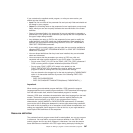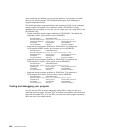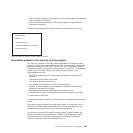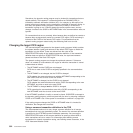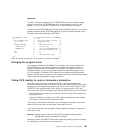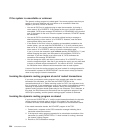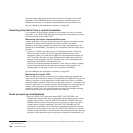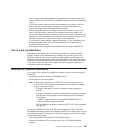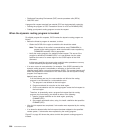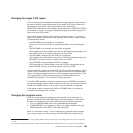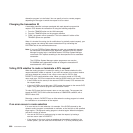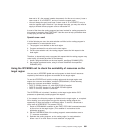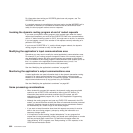Modifying the initial terminal data
The dynamic routing program should not perform an EXEC CICS RECEIVE or an
EXEC CICS GDS RECEIVE command, because this prevents the routed-to
transaction from obtaining the initial terminal data.
The CICS relay program, DFHAPRT, places a copy of the user’s initial terminal
input into a separate buffer. This information includes SNA presentation services
headers for APPC mapped and unmapped conversations. A pointer to this buffer
(DYRBPNTR), and its length (DYRBLGTH), are provided in the communications
area passed from DFHAPRT to the dynamic routing program.
Note that:
v The buffer pointed to by DYRBPNTR contains the data that arrived in the first
request unit (RU) of the message. If the RU size is large enough to hold the full
message, the buffer contains the full message. However, if the RU size is less
than the message length, the buffer contains only the data from the first RU
(even if the buffer itself is large enough to hold the full message).
v The length field DYRBLGTH is the length of the message, not the length of the
data in the buffer. DYRBLGTH contains the length of data in the buffer only if the
full message arrived in a single RU.
v If all the following are true, no initial terminal input data is passed to the routing
program:
1. The routing program is running in the AOR.
2. The original request was transaction-routed from the TOR.
3. The originating facility is an APPC parallel session.
Because the transaction profile has not been queried at this point, uppercase
translation has not been performed on the input data unless UCTRAN(YES) is
specified on the TYPETERM definition.
Sometimes you may want to modify the initial data input by the user. (It may be
necessary to do this if, for example, you change the ID of the remote transaction,
using field DYRTRAN of the communications area.) To modify the input data, your
routing program should, when invoked for route selection:
1. Copy the input data pointed to by DYRBPNTR into a named variable, of length
DYRBLGTH
2. Modify the data in the named variable
3. Use the INPUTMSG option of the EXEC CICS RETURN command to make the
modified data available to the application program.
For guidance information about using INPUTMSG on EXEC CICS RETURN
commands, see the other methods described in INPUTMSG, in the CICS
Application Programming Guide. For programming information about the
INPUTMSG option, see RETURN, in the CICS Application Programming Reference
manual.
Note: If, after modifying the input data, the dynamic routing program is reinvoked
because an error occurs in routing to the selected transaction, it should
“remember” that it has modified the original user-input.
Modifying the application’s communications area
Sometimes you may want to modify the routed application’s communications area.
For example, if your routing program changes the ID of the remote transaction, it
Chapter 17. Writing a dynamic routing program 595



